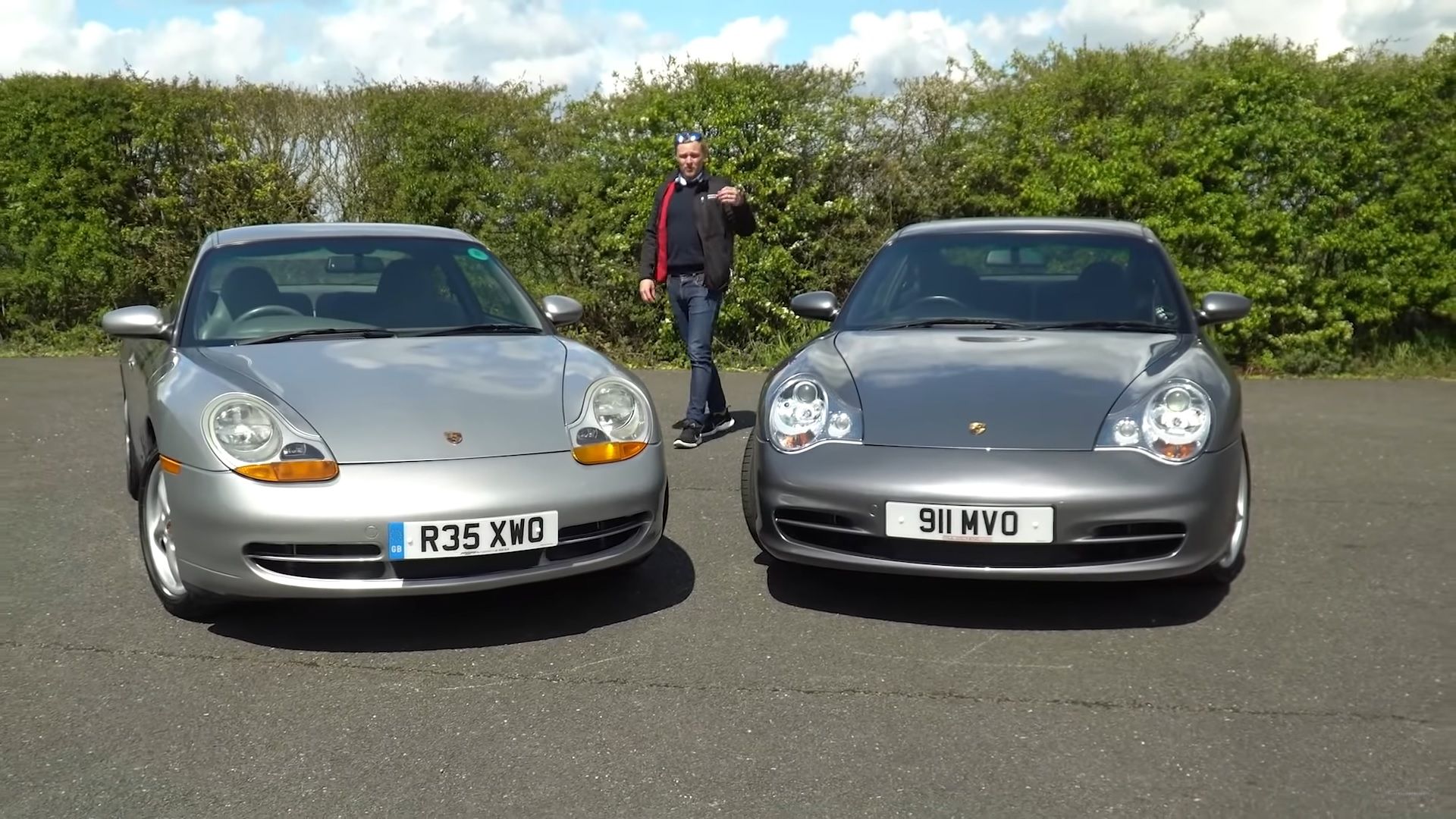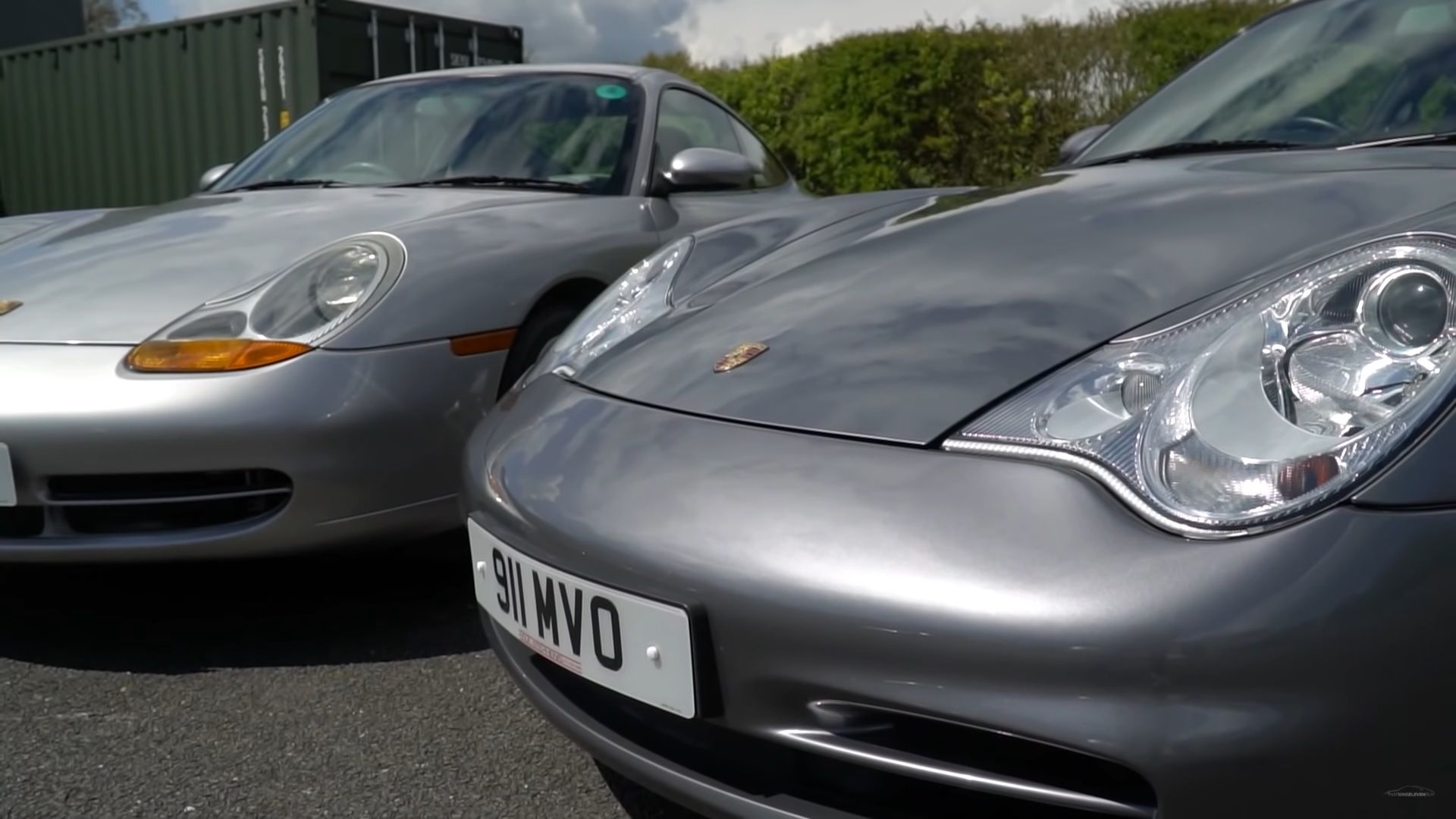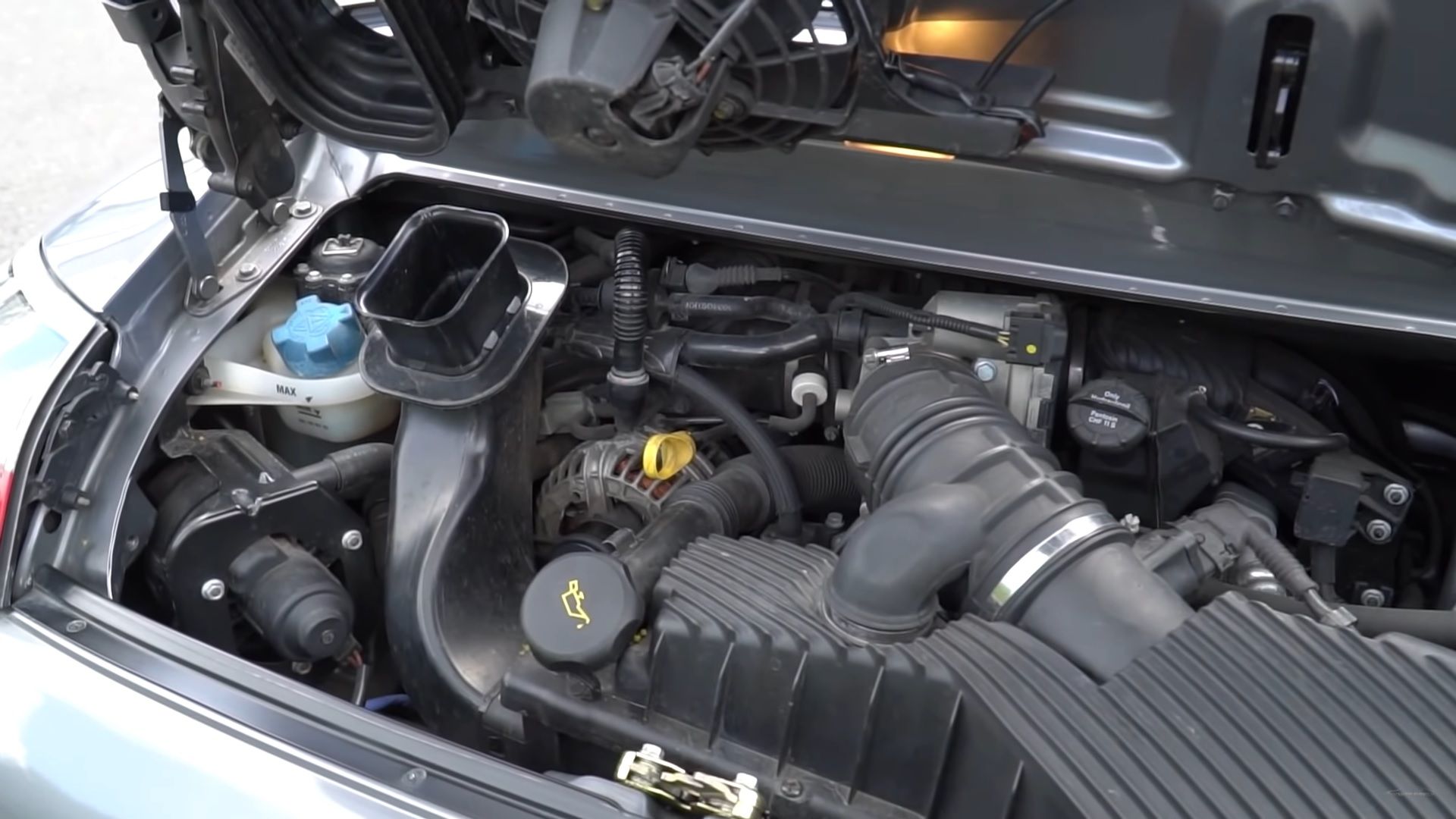The Porsche 911 is a car that doesn’t really need an introduction. Since, the 1960s, it has had many generations, all of which with their respectable fan bases. That said, every family has a Black sheep and in the case of the Porsche 911, the 996-generation is that Black sheep. If you are reading this, there is a good chance you know what I’m talking about, but what you may not know is just how different earlier and later 996 cars really are. Luckily, “That Nine Eleven Guy” has a YouTube video showing you just that.
The video showcases all “the material and immaterial differences between the Gen. One and Gen. Two 996”. We start off with the Gen. One 996, which is actually “the first 100 percent brand new, from the ground up, 911 since its inception in 1963”. The front end is largely identical to the 986 Boxter. The headlamps combine low beams, high beams, indicators, and dog lamps, all in one place. The one-piece design made it possible to assemble on the production line, in 20 seconds.
This particular 996.1 is equipped with the rarer 7x17 front and 9x17-inch rear wheels. Most customers have opted for the 18-inch wheels, back when they were buying the car brand new.
A crucial difference between the 996.1 and 996.2 cars was the throttle actuation. Earlier cars had a throttle cable, while later ones had an electronic throttle (throttle by wire). The throttle cable (or lack thereof) can be seen when you lift the carpets behind the driver’s seat. Early models also had a more basic traction control system.
For the 2002 model year, Porsche updated the 996. Enter the 996.2. Exterior-wise, the headlights were now identical to the 996 Turbo and the bumper had more pronounced vents. The 996.2 is also 5.0 mm (0.2 inches) wider than the 996.1 (1,770 mm vs 1,765 mm).
In addition, the front track width of the updated car is 10.0 mm (0.4 inches) wider and the car is 25 percent stiffer. Although the same wheel size was offered as standard, this 996.2 has the optional 8x18 front and 10x18 rear inch wheel setup.
Inside, you now have the three-spoke steering wheel as standard and the boot and deck lid buttons are now electric instead of mechanical. Some materials have been upgraded, but overall it wasn’t a big improvement in material quality.
Engine-wise the M96.01 3.4-liter flat-six in the earlier cars produced 300 horsepower and 258 pound-feet (350 Nm). The M96.03 in the 996.2 was 80 percent new. It had gained 20 horsepower and 15 pound-feet (20 Nm) and now developed 320 horsepower and 273 pound-feet (370 Nm). This allowed both cars to reach 60 mph (97 km/h) in the low to mid-five-second range. The 996.2 also has a freer-flowing exhaust and this particular one has the optional sports exhaust.
In terms of which one to go for, both have their pros and cons, but “in either scenario, you should be led exclusively by the condition when it comes to looking for the perfect 996 for you”. In the end, “it all comes down to personal preference”.
Check out the video if you are interested in learning more about the differences between the 996.1 and 996.2. Which one would you rather have?
Be sure to check out What You Really Need to Know About the 1997-2004 Porsche 996 911!






